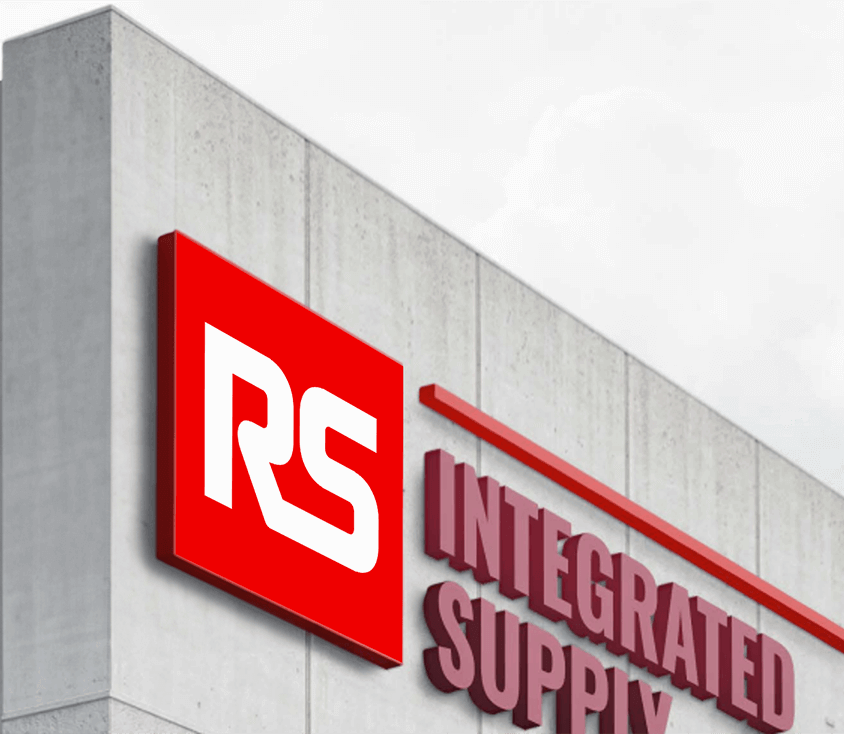Published on
Read time: 7 minutes

Optimized inventory and redesigned storeroom increased the efficiency of the MRO supply chain, creating significant savings.
The Background
Following political crises such as the Ukraine-Russia war, global food prices surged from 2021 to 2024, leading to significant inflation in the UK’s food prices, peaking at 19.2% in March 2023, the highest in over 45 years. This, coupled with the impact of COVID-19 and Brexit, triggered a cost-of-living crisis, creating a decline in consumer demand and a shift from high-end to traditional options for consumer goods. All these factors contributed to a compression of overall profit margins for companies operating in the food and beverage (F&B) sector.
Against this backdrop, F&B industry players have sought to bolster efficiency and curtail operational costs. In early 2023, one of the world’s largest food industry companies contacted us seeking integrated supply services for their MRO (Maintenance, Repair, and Operations) requirements across four sites in the UK.
Like other intermediary F&B players, our client’s product costs depend heavily on commodity prices, limiting the flexibility of their cost structure. This led them to seek MRO optimisation solutions to improve overall production and operation efficiency and support profitability. The company’s first problem was its indirect material storeroom. They needed a functioning MRO storeroom management system and procedures. All operations were managed through spreadsheets, resulting in inventory that was out of control. The storeroom’s inadequate housekeeping led to extended searches for stocked items, increasing maintenance downtime. Moreover, the operational workload caused by the procurement and transactional management of unstocked items resulted in inefficient resource utilisation at the procurement level, significantly raising operational costs.
Like other F&B companies, our client’s MRO-related transactions create significant transactional and supply chain management inefficiencies, consuming over 90% of their purchasing workload despite constituting at most 5% of their overall purchasing expenses.
The Challenges
Providing integrated and end-to-end MRO supply chain services always involves tackling challenges, as exemplified in this client case study. Upon assessment, it became apparent that there were significant gaps in inventory management.
Specifically, no previously determined optimum stock level (min/max) existed for inventory items, and the existing inventory data was poorly documented. This lack of clarity presented a substantial hurdle in effectively managing supply chains and meeting internal demands.
The second challenge encountered pertained to the physical condition of the storerooms. We identified the need for fit-for-purpose shelving and item identification, resulting in a chaotic and disorganised environment. This lack of structured storage solutions led to inefficiencies in locating and retrieving MRO supplies, consequently impacting operational efficiency and productivity. Addressing this challenge necessitated a comprehensive overhaul of the storeroom layout and the implementation of systematic storage practices to streamline inventory management processes.
Lastly, stakeholder management emerged as a critical challenge. The end-user item pickup process lacked control and was characterised by minimal oversight and accountability. The lack of governance was commonplace, significantly contributing to the disorganised environment and data issues. Ultimately, it undermined the reliability of storeroom service delivery.
In response to these challenges, RS Integrated Supply was employed to provide an end-to-end MRO service to address all the issues across all four client sites. Improving storeroom management was key to the project’s success, and it started with a seamless implementation.
IMPLEMENTATION PROJECT OBJECTIVES
As the client required a fully integrated supply services solution, the objective of the wider project encompassed all processes related to the procurement and management of stocked and unstocked MRO items. However, the primary focus of the implementation project revolved around the storeroom, with the following targets identified:
- Re-organize the storeroom and housekeeping.
- Record existing inventory data.
- Optimize and reduce inventory levels.
- Implement the RS SYNC™ system for inventory management.
- Build a highly competent team to oversee storeroom operations.
The Solution
RS Integrated Supply’s Storeroom Solutions® was the perfect answer for the client’s needs. Recognising the storeroom’s pivotal role in the life cycle of indirect supply chain Internal operations and the financial burden of stocked items, we embarked on a multi-month implementation project to establish Operational Excellence with a properly functioning management system and optimal inventory levels.
During the implementation, our dedicated team diligently worked to elevate all storerooms across four sites to the world-class standards of RS Integrated Supply before the project’s go-live date. These efforts included:
- Existing Inventory Data Generation
A critical step in the implementation process was collecting, cleansing, and standardising existing inventory data. During this process, we utilised our proprietary mobile app, SnapPart™, incorporating mobile technology, imaging, and artificial intelligence. This app facilitated the capture of comprehensive information such as images/models, manufacturer details, part numbers, classification, and descriptions, enhancing inventory data accuracy. The app’s rapid part identification capability facilitated quick and reliable data capture. After the final data cleansing process, our client gained an accurate view of their current inventory and the financial implications of their stock.
- Inventory Optimisation
We determined optimum stocking levels for each unique item based on past purchase data, criticality, and lead times.
- Storeroom Layout & Design
Considering factors such as ideal inventory levels, turnover rates, employee traffic flow, safety, and ergonomics, we redesigned and rebuilt the entire storeroom for all four sites.
Along with the new physical standards, we also introduced an identification methodology, which enabled storeroom employees to locate items easily and reduce overall downtime.
- Integration of RS Sync™
RS Sync™, our cloud-based platform, connects people, processes, and equipment enterprise-wide. It allows us to manage the entire procure-to-pay (P2P) process and provides a comprehensive inventory management platform.
Integrating RS Sync™ with the client’s ERP system enabled us to fully record inventory, manage auto-replenishment, and record and track all item movements. The built-in CMMS functions also provided opportunities to generate insights into future demand by informing our buyers of all planned maintenance activities and identifying required spare parts.
After completing all implementation activities, the storerooms were transformed into seamlessly functioning service stations. The implementation process immediately impacted site operations and financial burdens from the initial go-live date. It ensured the availability of the right products in the right quantities with precise data, enabling maintenance teams to swiftly address downtime issues and equipment maintenance, facilitating quicker job completion.
As a result of the 12-week implementation program at each site:
- 100% of the inventory was categorised and recorded with a highly reliable dataset, including manufacturer names, part numbers and images.
- The housekeeping standards of the storerooms were significantly improved, providing substantial support through Operational Excellence.
The Outcome
The implementation outcome was remarkable: we transitioned from 0% to 100% of items having accurate data.
Here’s some impactful insight: we discovered 4888 unrecorded items across all four sites, accounting for 27% of the total stock and worth more than £1 million. Their existence went unrecorded for years, highlighting the importance of thorough inventory management. The significance of the implementation on inventory data is summarised in the table below.
| Consolidated Data for 4 Sites | Before | After | Improvement |
|---|---|---|---|
| # of Recorded Items | 12923 | 17811 | 37% |
| Items w/ Manufacturer Info | 16% | 99% | 83% |
| Items w/ Manufacturer Part Number | 9% | 94% | 85% |
| Items w/ Images | 0% | 100% | 100% |
| Items Linked to Categories | 32% | 100% | 68% |
The Results
Within six months, the program had significantly enhanced efficiency, demonstrating the potential to deliver up to £500,000 annually in direct and indirect savings.
Initially, the client benefited from RS Integrated Supply specific item prices and a substantial MRO procurement transactional workload reduction, with vendor consolidation of over 90% and transaction reduction of over 80%. In addition to these procurement-driven savings, the implementation project yielded further benefits:
- Inventory Optimization: The overall on-hand inventory level was reduced from £6.6 million to £6.4 million and is projected to decrease to £5.6 million by the end of the initial 3-year contract duration. Representing an improvement of over £100,000 in stock carrying costs.
- Reduced Storeroom Wait Times: The average storeroom has a failure rate of 25% unfulfilled picks before initiating RS Integrated Supply Operational Excellence, which reduces to below 1% after completing our implementation. Based on four storerooms that represent over 3,000 unsuccessful storeroom visits per year being removed, saving maintenance time worth over £100,000 annually and significantly reducing overall asset downtime




